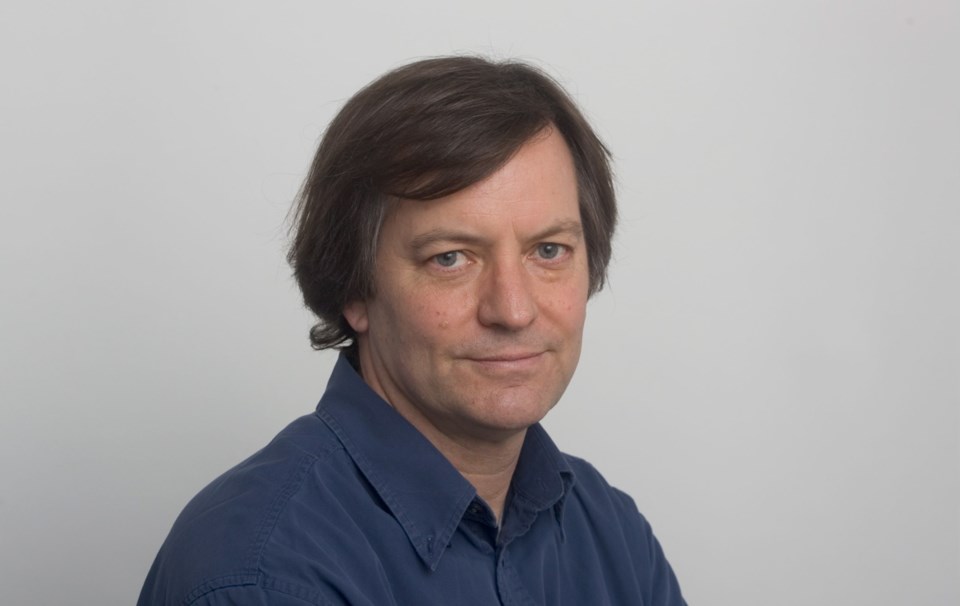 Judy McLaren is a painter in the classical, realist tradition. Her education at the Ontario College of Art and subsequent training at the Royal Ontario Museum set her on this path. We met almost 30 years ago, and even then I could see this was an artist who knew what she was about.
Judy McLaren is a painter in the classical, realist tradition. Her education at the Ontario College of Art and subsequent training at the Royal Ontario Museum set her on this path. We met almost 30 years ago, and even then I could see this was an artist who knew what she was about.
Life has taken her through ups and downs, but McLaren has remained true to her calling. Her latest oil paintings will be on show this summer in back-to-back exhibitions, showing her considerable abilities in two different subject areas.
The first, Shorelines, is at Dales Gallery (537 Fisgard St., 250-383-1552, June 2-29) and presents ocean waves rushing onto the shore in a dramatically realist manner; the second, Summer Heat, at Eclectic Gallery (2170 Oak Bay Ave., 250-590-8095, July 13-Aug. 15), presents smaller, more expressionist figurative compositions of people on the beach.
You might have met McLaren while she was artist-in-residence at the Empress Hotel in 2011. This time, we met at McLaren’s tranquil home in North Saanich. While her husband continued to work on the neatly groomed garden, we toured her studio at the back of the property, and then settled in with a cup of tea in their comfortable living room.
“Basically, I think I’m a late bloomer,” she began. “I worked and explored, and keep exploring.” For many years McLaren has pursued commissioned portraiture and also explores more complex presentations of people.
“But basically,” she continued, “I think things have kind of coalesced in the last five years. I’ve had cancer, so that has put an urgency into my painting.” This month marks three years since her diagnosis, “and that’s always been in my head, too.”
In addition to her career as a portrait painter, she has done a lot of painting in both her own studio and at our local co-operative, XChanges.
“That’s really important to me. You have to keep working at it, honing your skills — or what’s the point? You have to keep challenging yourself to get better.”
The practice has paid off.
“I have no trouble doing a painting from start to finish in four hours … I like to work really fast,” she insisted. “It’s one of the key things, that is to work from your gut, so that you’re ‘painting faster than you can think.’ This is a quotation from a book by Eric Fischl. He’s one of my heroes, and I think that about sums it up.”
On her website, judymclaren.com, you can see stop-action videos that show the evolution of her four-by-eight-foot canvas of waves rushing toward the viewer. With only the slightest regard for the photo in her hand, she washes rippling streaks across the canvas with expressive abandon, and it runs and drips down in front of her.
“It’s very important to me. I like to be loose as much as I can. It has to be my own energy and personality that I put into a scene,” she commented. “I never faithfully reproduce anything.”
Working with her basic palette — ultramarine blue, burnt umber, raw sienna, viridian and quinacridone crimson — she forges ahead. As the image resolves before your eyes, the precision she achieves comes as a surprise.
Up close, her brush work is quite loose, though from a distance the image is highly resolved. The power of her imagery comes from the freedom with which she begins.
“I’m being moved by all the movement in the painting,” she told me. “I’m channelling it through me and it’s splashing up there on the canvas.” Losing one’s self in the energy of the universe is certainly a form of meditation.
“It was extremely helpful to me in the course of going through cancer,” she reflected. She spoke of the “grounded interaction between solid and fluid.”
“I’m drawn to stormy scenes more than quiet, contemplative, reflective ones. I really love the energy. I feel incredibly strong when I am doing them,” she went on. “I feel I am losing myself in that ocean. And in the energy, the movement, the twists and turns, the reflections and refractions — all the complexity of it has been a tremendously liberating experience.”
She indicated the retreating rivulets of the retreating waves: “The tentacles of the water coming down there. I love that.” This connection of land and water is a necessary part of each image.
“That’s why the show is called Shorelines,” McLaren said. “I want to be standing there and feel it on my feet, almost.”
McLaren’s figurative subjects on the beach, which will make up her July show, are products of a different game. For those smaller pictures, she chose to work with bold colours and shapes, revelling in the interplay between flat and modelled.
“With a person as the subject, the artist is not lost in the image. It’s a two-way thought there, between subject and painter. I like to present the complexity of the human character. People who think — that’s kind of where I’m at.”
McLaren is not the type of person who likes to sit and be calm.
“I’ve got to get up and hike up the hill every day — do something! I want to be making something beautiful. Otherwise, I don’t feel I deserve a place on the planet.”
Speaking of the planet, the Shorelines show coincides with World Oceans Day, June 8, and 20 per cent of all sales will go to the Raincoast Conservation Foundation.



